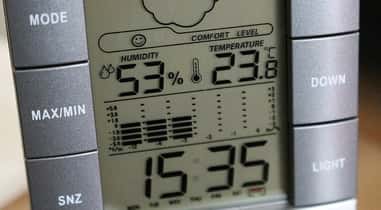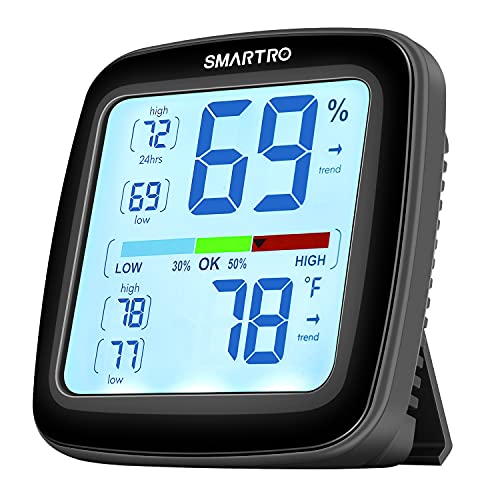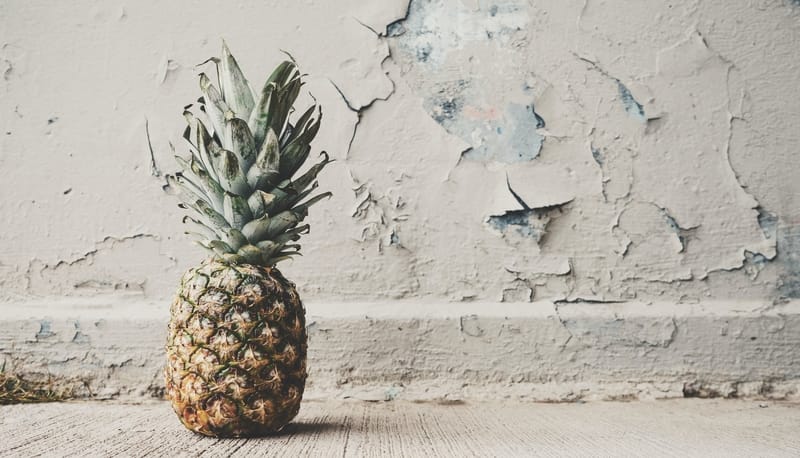Last Updated on January 2, 2024
Using humidifier helps increase humidity in your home environment to suitable levels, for you and your appliances. However, you might wonder how long should a humidifier be ON to achieve that? Well, this article is all about figuring time duration for which you should run your humidifier.
Humidifier should be ON from couple of hours up to 24 hours depending on moisture output as well as size, relative humidity, temperature, airflow and even accessories in room. Evaporative humidifiers and those with built-in humidistat resolve this problem by automatically adjusting operation with change in relative humidity.
The reason why you don’t need to worry about running time of evaporative humidifiers is the principle on which they operate.
However, most humidifiers are ultrasonic. If they lack humidistat and thereby automaticity, you will need to identify number of hours for which they need to run, to achieve recommended relative humidity in a space.

I plan to discuss variables that decide time for which you need to run your humidifier as well as a methodology to estimate number of hours of running. My goal in this article is to help you decide humidifier running time specifically for your space and humidifier.
Factors That Decide How Long Humidifier Needs to Be ON
1. Output Rate of Humidifier vs Area of Humidification Space
Purpose of a humidifier, regardless of its size and type, is to increase relative humidity in a space to recommended levels.
Most experts identify comfortable and healthy relative humidity range from 30-50%. So, the goal is to keep humidity somewhere in between this range. However, it depends on your humidifier how fast it can achieve target humidity.
Actually, depending on size and type of humidifier, rate at which it releases moisture per unit time varies. This rate is called output of humidifier.
Many humidifiers give this moisture off as mist, thereby it is also called mist output rate.
Higher output means that you will be able to moisturize your room or space quickly and thereby humidifier will need to stay ON for less time. Similarly, a lower mist rate means slower humidification and thereby more running time of humidifier.
Of course, when I talk about higher or lower moisture output rate of humidifier, it is relative to the area of room or space in square feet, that you wish to humidify. Thereby, there is a possibility that for the same humidifier one room may humidify much quickly compared to other.
Note: Output capacity, mist output rate, moisture output rate etc. all terms refer to moisture that is given off by humidifier in an hour or a specific interval of time.
Also, mist is a term used here based on commonality. There is a possibility that you have a humidifier that does not generate mist i.e., whole-house humidifier.
2. Atmospheric Temperature of Room

There is an interesting relation between temperature and humidity. Actually, temperature has an inverse effect on relative humidity.
This means, in environment of your home, when temperature increases, humidity will generally decrease. Similarly, when temperature reduces, humidity will increase.
For the same value of relative humidity in a room, let’s say 20%, if you wish to increase it to 40%, it is easier to do that at 55°F than 65°F. The reason is that water holding capacity of air reduces with decrease in temperature.
That is why in winters, you experience condensation. Temperature becomes so low that water in air becomes higher than its water holding capacity. Thereby, excess water is given off in the form of condensation.
I know this relation between temperature of your room, relative humidity and rate of humidification is weird. But it is one of the deciding variables in how long you have to keep your humidifier ON.
3. Water Holding Capacity of Humidifier
Contrasting output of humidifier (mist output per hour), there is something called holding capacity of humidifier.
It is the total amount of moisture that your humidifier gives off before it becomes completely empty from being completely filled.
In simple terms, capacity of humidifier is the maximum amount of water that its reservoir can hold.
Holding capacity and output of humidifier collectively decide its maximum running time.
That is why I advise to compare capacity of humidifiers with their output when looking for a new one.
Here is the reason for that…
When you choose a humidifier that has high output, it will be effective in humidifying large spaces, however, with relatively less water holding capacity, it will run for lesser time duration.
Due to this you would have to fill it frequently.
Let me share an example for understanding why relationship of humidifier output and its capacity is important…
Let’s say you use two humidifiers, both of which have a capacity of 6 liters. However, output of one humidifier is 500 ml per hour while that of the second one is 300 ml per hour.
Despite both having same water holding capacities i.e., 6 L, first humidifier, when completely filled with water, will operate for 12 hours, while the second one will operate for 20 hours.
You see both hold same amount of water but one with higher mist rate or output rate per hour will empty quicker.
Fact Check: Higher the output of humidifier, quicker will be its humidification.
4. Airflow in Humidification Space
Higher flow of air in the space to be humidified will cause relative humidity to normalize quicker.
A good airflow in your home is vital. Not only is it necessary for you but it will actually help mist from humidifier to spread uniformly in the home.
However, higher flow rate will cause air in the room to replace faster. Resultantly, your humidifier will have a hard time achieving required relative humidity.
Try limiting forced flow of air from central air conditioning system, ventilation etc. to only what is required.
I would also advice to reduce natural crossflow of air from windows by closing them partially or only opening selection of windows. This is especially true in winters, as air directed internally will be heated and its humidity will reduce a lot.
5. Design and Components of Home

Internal configuration of your home has an immense effect on reach of air and thereby your humidifier.
A limited controlled flow of air supplements spread of moisture from humidifier in your home. Thereby it reduces the time for which humidifier needs to be ON.
Another important variable that has an impact on the required running time of your humidifier, to achieve recommended humidity, is components of your home.
If humidity is well below 30 %, accessories, equipment and furniture may cause the humidifier to operate for relatively longer time before desired relative humidity is attained.
To make my point, let’s say there are a lot of accessories in your home that have wood as major constituent.
In this situation, humidifier will have to give off abundant moisture for extended period of time. The reason is initially dry wood will absorb sufficient amount of moisture from it. After which moisture from humidifier will increase overall relative humidity in the environment.
How Long Humidifier Should Be ON In Your Situation Specifically?
A humidifier should be ON until it performs enough humidification to achieve recommended relative humidity in the required space.
Lower than minimum recommended relative humidity (below 30%), environment of your home will be too dry for you and your appliances.
Higher than maximum recommended relative humidity (above 60%), you will experience condensation that may cause mold. It will damage construction of your home and more importantly it is unhealthy for you.
It may take your humidifier from a couple of hours up to 24 hours to humidify a space. That’s a stretch. Good luck deciding running time of humidifier based on that information.
However, I plan to discuss number of ways that will help you make a rough estimate of duration for which your humidifier needs to run.
Before that, you should know there are certain limitations when using humidifiers that are inevitable:
- Humidity fluctuates through the year, month, week and even during the same day. Thereby these strategies below are only successful if you turn humidifier ON at the same time in a day and readjust its timing a little after a couple of weeks.
- When you start using humidifier in a space, accessories like furniture, wooden cabinets, floorboard etc. absorb a lot of moisture initially. So, it will take some days before approximate required running time of humidifier becomes consistent.
Keeping into consideration above limitations, you can use combination of tips and suggestions below to get an estimation of how much your humidifier needs to be ON.
Suggestion # 1: Use a Hygrometer to Estimate Running Time of Humidifier
Just a couple of bucks and you will be able to measure exact relative humidity in a space with a quality hygrometer.
If you don’t have an accurate hygrometer, I selected one for you taking into account accuracy, quality and price. I have mentioned it in the next section of this article.
Here’s how you could use hygrometer to help you estimate required running time of humidifier:
Turn your humidifier ON at a specific time in the day. Monitor current relative humidity by using a hygrometer. Let’s say it is 18% and you want to increase it to 40%.
With time, by operation of humidifier, relative humidity will increase, that will be indicated by your hygrometer.
If you have just started using humidifier in a particular room, it may take a lot longer than usually required for first couple of times, until required humidity is achieved. This is an indication that accessories like wooden furniture in the room are taking a lot of moisture.
Use it a few more times and hopefully time that it takes to humidify the room will reduce.
Measure the time taken by humidifier from start to end until you see that target humidity is attained by it and shown on hygrometer.
After running your humidifier couple of times in a room, you will notice that humidification time has become consistent. This time interval is the required estimated time your humidifier should be ON to attain recommended relative humidity.
Note: Humidity fluctuates through the year as I mentioned earlier. It is a good idea to readjust running time of humidifier a little bit after couple of weeks.

Suggestion # 2: Know Factors That Affect Humidification Time.
I discussed for you, in this section, variables that control humidification time of humidifier like moisture output rate, size of room, flow of air, temperature etc.
If you roughly take into account all of these, as I indicated in the start, they will help you immensely in estimating humidification time for your specific humidifier and space, compared to normal.
Suggestion # 3: Size Your Humidifier Correctly
When choosing humidifier for a space, or considering one you already have to run in another room, makes sure it is sized adequately for the square footage of the room.
Humidification space will directly impact output of humidifier (mist output rate).
So, if humidifier is too small for the room it will take much more time than usual to humidify a space. Similarly, a large-sized humidifier means much quicker humidification than usual.
My point is that this will make it more difficult to estimate the time for which humidifier needs to be ON. As the more inadequately sized a humidifier is, the more its humidification time will deviate from normal.
Manufacturers usually define area of the room in square feet that a humidifier will be able to humidify effectively. When selecting one always look for this in specifications.
Solutions to Stop Worrying About Humidifier Running Time Entirely
You can take one of the following approaches to completely eliminate tension of humidification time:
1. Use A Humidifier with Built-in Humidistat
There are humidifiers available that have automated operation. They have built-in humidistat that monitors existing humidity. You can set a value of target relative humidity that you want.
After required humidity is attained, humidifier will turn Off. When humidity drops below the set value, it will start working again until recommended humidity in maintained in the room.
Click here to view my recommended humidifier with automatic humidity control.
2. Try Evaporative Humidifier
Evaporative humidifier operates purely on the principle of evaporation (thus the name).
Actually, it contains a wick filter that absorbs water. A fan blows dry air through it. As a result, water in the filter is evaporated in the room. The speed of the fan will directly impact rate of evaporation and thereby expulsion of humidity in the environment.
The cool thing about evaporative humidifier is that as humidity levels increase in your home, rate of evaporation will automatically decrease, due to the principle on which it operates.
This means despite the ability to regulate humidity, by varying fan speed and the extent to which wick is wet, you have a natural control on the rate at which moisture is expelled by evaporative humidifier.
I researched many evaporative humidifiers and finally narrowed down to Vornado Evap40 Evaporative Humidifier.
It has the highest water storage capacity I could find, 4 gallons (about 15 liters) to be exact. You can adjust humidity you need in the room as well as control its speed with low, medium and high options.
In case you are wondering, this humidifier is backed by Vornado’s 5-year limited warranty.
The drawback of evaporative humidifiers is their relatively higher noise compared to ultrasonic humidifiers. However, you still have a lot of control on it by varying fan speed.
Just remember you will need to change wick filter of evaporative humidifier after prescribed time. I know this is a little bit of additional maintenance, but it would save you from white dust in your home and allow much better air quality.
3. Use a Humidity Monitor or Hygrometer
If for the most time you are present in the room where humidifier is running, you may use hygrometer, or humidistat within your humidifier, if it has one, to monitor relative humidity levels.
Your humidifier will not be automatically timed, like the options that I previously mentioned. However, you can periodically monitor humidity on the humidistat.
Then when desired humidity is achieved in the room and displayed on the monitor, you can turn Off your humidifier.
Later you can turn humidifier ON again when relative humidity drops below recommended range.
I actually selected a hygrometer for you, taking into consideration several factors, including accuracy, quality and value for money.
The reason I recommend SMARTRO SC42 Professional Digital Hygrometer is because of its high accuracy swiss humidity sensors with tolerance of ±2%RH, which is pretty great for this price.
It can be manually calibrated and certified by Aerospace Institute for Metrology and Measurement Technology.




